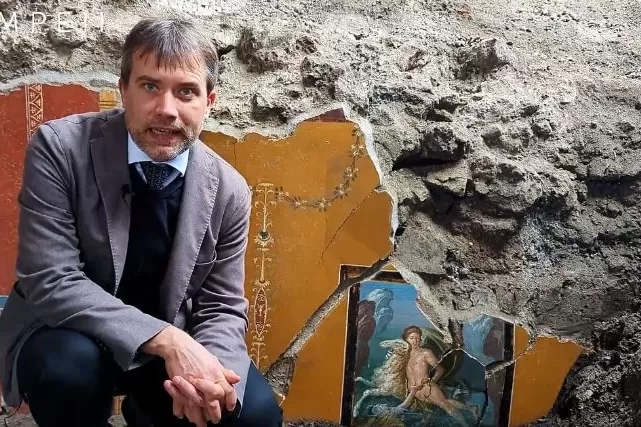- In short: Archaeologists have unearthed a fresco depicting a Greek myth in Pompeii’s ruins.
- The fresco was found as part of restoration efforts of the House of Leda.
- The painting is still colourful despite being more than 2,000 years old.
A lavish painting depicting mythological Greek siblings has been unearthed during an excavation in the ruins of the ancient city Pompeii.
Still colourful after more than 2,000 years, the painting was among several frescoes found during restoration work around the mansion of the House of Leda.
“Among the IV Style decorations that cover the back walls, the mythological painting depicting Phrixus and Helle fleeing on the ram of the Golden Fleece stands out,” the Pompeii Archaeological Park wrote in a statement on its website.
The art shows a scene from the Greek myth of Phrixus and his twin sister Helle who fled their stepmother Ino on the magical ram with a Golden Fleece.
The fresco depicts Phrixus on the ram while his sister is seen falling into the water.
It is painted as if it were a framed picture, hung on a yellow wall.
Others depicting still life images and several portraits of women have also been uncovered.
The frescoes will be cleaned to remove volcanic ash and then will be restored.
The excavation of the House of Leda underway aims to restore the planimetric system of the house and acquire data to define the main rooms of the houses to the north and south.
Excavations at the House of Leda, which began in the 18th century and were relaunched in 2018, aim to reconstruct a complete plan of the site.
It will allow restorers to set up a new system of protective roofing and valorising to open the domus to the public.
Many of Pompeii’s buildings — and even some bodies of the estimated 3,000 victims — were perfectly preserved after the eruption of Mount Vesuvius in 79 ADE.
Pompeii is now a UNESCO World Heritage Site and the second most visited tourist site in Italy, after the Colosseum in Rome.
ABC/wires
